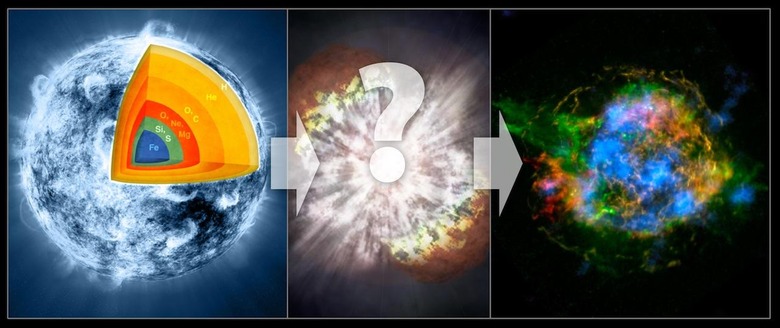NASA Captures Supernova Star Secrets On Camera
NASA has captured the first images of a star's supernova remains, having snapped the burst of radioactive material from the death hundreds of years ago of a star at least eight times larger our own sun. Images from the Nuclear Spectroscopic Telescope Array (NuSTAR) show Cassiopeia A (Cas A), the remains of a huge star, that consists of a "dense stellar corpse" surrounded by the ejected remains. Light from the explosion itself first reached Earth hundreds of years back, NASA says.
That means we still don't know exactly what happens at the point when a star explodes, though the shape of the debris cloud does indicate how it might have taken place. Although stars themselves may be spherical, the wildly distributed radiation – which consists of titanium-44 among other things – suggests their supernova explosions are not uniform.

NuSTAR's imagery of the Cas A radiation shows clumps of titanium-44 at the center of the dead star, lending weight to one suggested route by which it could have exploded. Scientists experimenting with different models of supernova events have sometimes found that the process can "stall" when the primary shock-wave fails to shatter the star as a whole.
That looks like it could be the case with Cas A. "The latest findings strongly suggest the exploding star literally sloshed around," NASA suggests, "re-energizing the stalled shock wave and allowing the star to finally blast off its outer layers."
If that model looks more likely, NuSTAR's data is also leaving others on shakier ground. One, which argued supernovas could see stars rapidly rotating and squirting off narrow streams of gas, then acting as triggers, is undermined because the titanium-44 was not observed in the jet regions.
NASA finished building NuSTAR back in 2012, kicking off its search for black holes in June. The telescope uses an assembly of complex mirror optics to gain insight into X-rays around stellar events.
